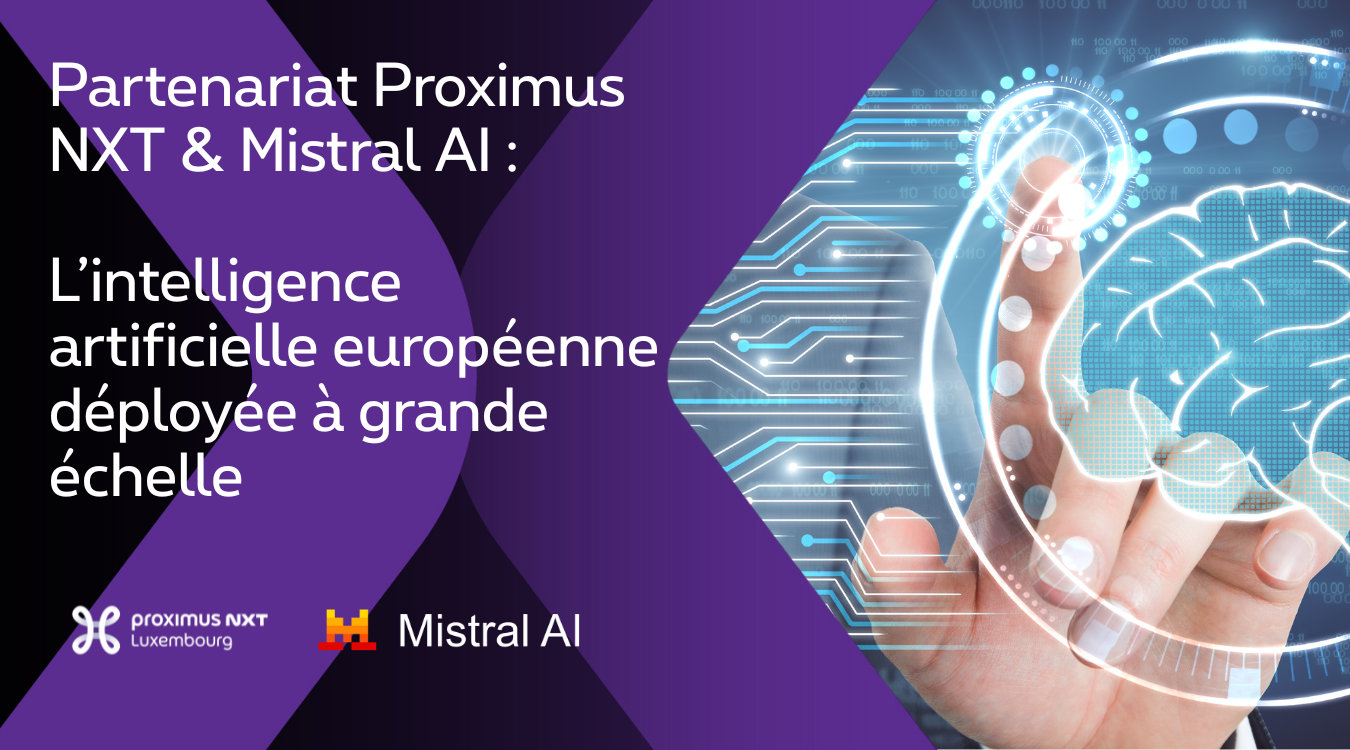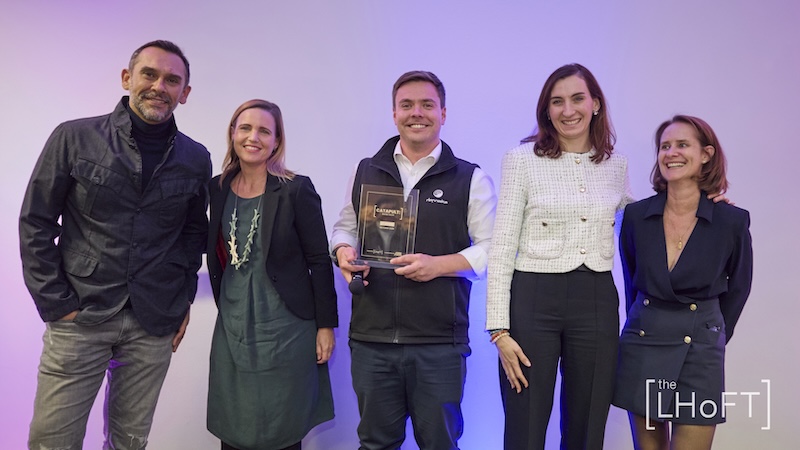Recently, I had the pleasure of attending the highly anticipated 2023 Paris Blockchain Week. This avant-garde event brought together a motley crew of industry leaders, developers, and enthusiasts, all aflutter with excitement to explore the latest developments in the blockchain realm.
During my time at the event, I was lucky enough to glean valuable insights from an array of keynote speakers and panel discussions, delving into hot topics such as the Metaverse, DeFi, cryptocurrencies, Web3, and the ever-evolving regulatory landscape of the blockchain ecosystem. As we continue to witness rapid advancements in the world of fintech, the wisdom I gleaned at Paris Blockchain Week will undoubtedly play a critical role in shaping the industry’s future.
In my quest to provide the most comprehensive coverage, I have divided my research into four main topics: Metaverse, Web3, Cryptocurrencies, and DLT/Blockchain.
These themes lie at the heart of the LHoFT’s mission of exploration, as the knowledge hub of the Luxembourg FinTech industry. Come with me now and let us embark on a journey to unravel finance’s future.
Episode 1 – Web3 – Through the Looking Glass
During the 2023 Paris Blockchain Week, industry leaders discussed the evolving landscape of Web3 and its implications for businesses, users, and society at large. Panelists delved into the differences between Web2 and Web3, the challenges of mass adoption, and the importance of ethics in this new digital era.
This article provides a comprehensive overview of their insights, highlighting the potential of Web3 to transform industries and reshape the way we interact with technology, while emphasizing the need for education, user experience, and inclusivity to drive successful adoption and create a more equitable digital future.
I. Paradigm Shift: The Web 3.0 Engineering of Decentralization, Commerce, and Trust
“The Renaissance and Enlightenment established many of the Western world’s political, monetary, and scientific institutions. Renaissance embraced and extended valuable elements from classical times that were lost in the Dark Ages and the Enlightenment marked the rapid development of modern scientific, political, and philosophical purpose. We’re living at the onset of another paradigm shift, one that will drive a transformation of how trust and authority operate on the planet.” – Joseph Lubin, CEO at Ethereum – ConsenSys
In today’s world, we face a variety of challenges, including climate change, economic inequality, and political instability. While blockchain technology and decentralized applications may offer some solutions, we must not forget the limitations of these tools in addressing the underlying problems such as the rising greenhouse gas emissions from human activity, disparities in access to resources and governance issues.
The current financial system, while flawed, has proven to be resilient in the face of this kind of adversity. While some may argue that a new monetary system is necessary, it is important to carefully consider the potential risks and drawbacks before embracing such a change. Ultimately, we need to approach these issues with a level-headed and pragmatic mindset, rather than seeking a quick fix that may create more problems than it solves.
The brainchild of Satoshi Nakamoto, blockchain technology and decentralized trust, possesses the power to potentially reshape societal trust, grounding it in a fresh, decentralized foundation. This potential can be fully realized provided it is guided by innovators, educators, and guardians who actively seek new coordination methods to overcome these obstacles. The Paris Blockchain Week taught us that it is essential to encourage and empower the creator within each of us if we want to forge the world of Web 3.0, a domain that demands a diverse spectrum of abilities, expertise, and experiences.
Web2 is the version of the internet we all know, characterized by centralized platforms and services that rely on a few companies – the famous “tech giants” – to manage search engines, social media, online shopping, operating systems etc., with control over user privacy and data security. In contrast, Web3 is a new paradigm for the internet that uses blockchain technology to create decentralized applications operating on a peer-to-peer network, providing greater user control over data and online interactions, as well as enhanced security and privacy.
Fundamentally, Web 3.0 seeks to remove or diminish intermediaries who leverage their positions for excessive market share and is already shaking the foundations of conventional business models. Today’s ecosystem encompasses thousands of Decentralized Autonomous Organizations (DAOs), with maturing tools such as decentralized identifiers (DID), badges, NFTs, and governance tokens that streamline community development and management. This framework fosters widespread engagement in governance and equitable distribution of value.
Armed with an updated form of system integrity, Web 3 infrastructure is poised to accommodate an array of applications in areas such as identity, self-custody, reputation, and professional networking.

II. Mysterious Landscape: Overcoming Challenges to enable Mass Adoption
During his keynote, Tim Draper, Managing Partner at Draper Associates, DFJ and Draper Venture Network, affirmed that the erosion of trust in the conventional banking system, exacerbated by recent crises such as the bankruptcy of Silicon Valley Bank and lackluster leadership, may result in a – although turbulent – transition toward decentralized frameworks.
While they may be part of the solution, the transition to such systems may itself be fraught with uncertainty. A cautious approach is therefore needed to ensure that the benefits outweigh the potential risks. It is crucial to recognize that not all decentralized systems are created equal, and that to be truly efficient, decentralization should be integrated into countries’ existing financial system.
Societal shifts are often accompanied by technological breakthroughs, which can bring both opportunities and challenges. While developing countries may see, for example, cryptocurrencies as a mean to leapfrog more established nations and attract entrepreneurial talent, a cautious approach is needed to ensure that the benefits outweigh negative outcomes. Ultimately, the goal should be to foster a favorable environment for the growth and development of decentralized systems projects, while also recognizing the limitations and potential risks involved, such as scalability, user-friendliness, and security risks including hacking. Furthermore, the regulatory and legal landscape for decentralized systems remains uncertain, and governance challenges can make decision-making difficult.
It is likely, however, that these constraints will be addressed as the technology evolves, Meanwhile, regulatory frameworks are likely to be developed over time to provide greater clarity and legal protections for businesses and investors operating in the space.
Providing Balance, Opportunities and Ethical Practices
During the panel “Web2 and Web3: Do We Have to Choose?”, Dirk Lueth, co-CEO of Uplandme, Inc.; Iri Zohar, CEO at Bring; Thijs Maas, CEO of Onramper; Robert McCracken, ecosystem lead at Alchemy Pay; and Nicolas Joly, Head of M&A at Group Casino, shared their insights on the significance of the new Web iteration.
In essence, Web3 differs from Web2 in terms of decentralization, immediacy, heightened security, and user ownership. It engages audiences more deeply, emphasizing community-driven development and collaboration, and enables greater personal sovereignty and borderless community-based networks.
Web3 also has the potential to facilitate a more equitable distribution of profits, as users can directly benefit from staking tokens and participating in various aspects of the ecosystem. Considering this, Web2 giants may need to adjust their business models to incorporate Web3, recognizing that collaboration and symbiosis between Web2 and Web3 can benefit both sides. Bridging the gap between Web2 and Web3 for mass adoption is crucial, with user experience (UX) playing a critical role. Integration within existing systems is essential for a seamless experience, which hinges on the willingness of established companies to educate their employees and customers about Web3, blockchain, and related concepts to ensure successful adoption. The shift and related training may be challenging for employees accustomed to legacy systems, but it is necessary to embrace the Web3 era.
In detail, infrastructure such as wallets and payment systems must be developed for both B2B and B2C applications. Not everything needs to be decentralized though; average users often prefer ease of use and customer support. Business model adaptations may include both crypto adoption and the continued use of fiat currencies to reach a wider audience by connecting cryptos to real-world value.
Additionally, offering low-cost entry points to Web3 platforms can make them more inclusive. There is also a need to focus on removing obstacles and meeting users where they are while supporting various payment methods.
There are at least three crucial factors to consider for mass adoption:
- Supporting the Web3 community with three key pillars: infrastructure, go-to-market, and storytelling.
- Educating prospective clients and users to understand the benefits of Web3, relating to their needs.
- Addressing the high failure rate in onboarding users to crypto platforms.
The second panel on “The Ethics of Web3”, featuring Moojan Asghari, co-founder of Thousand Faces; Oscar Wendel, senior manager at the Dubai World Trade Centre; Alison Alexander, COO and director of ethics & social policy at Metacampus; Margaux Frisque, co-founder of D&A Partners; and Loic Brotons, CEO at Galeon, provided their individual definitions of ethics in the context of Web3. Ethics are a fluid concept that evolves alongside human and technological developments. They involve defining values and principles to protect society and the environment from harm and creating new habits for businesses, making the industry more reliable for consumers and investors. Ethics in Web3 should also consider the underlying benefits of new technologies and the negative potential for scams and hype; ultimately, it is a concept that changes over time, influenced by the current stage of society and technology.
Defining an ethical framework for new technologies like Web3 is challenging, as technological advancements often outpace ethical considerations. The fall of Celsius Network, FTX, and Luna in the past raise questions about the lack of accountability and the role of decentralization. Anonymity has also proven to be a double-edged sword, as it can provide security and privacy while also enabling unethical behavior and making it harder to hold bad actors accountable.
Regulations have evolved in response to unethical events and collapses in the crypto industry, such as the implementation of the MiCA Regulation to protect consumers and harmonize frameworks across EU member states, making it easier for businesses to operate across different jurisdictions.
Conclusion
The transition to Web3 presents both challenges and opportunities for businesses and individuals. While decentralization and community-driven development may offer certain benefits, it is important to approach these changes with a level-headed and pragmatic mindset, to ensure that the benefits outweigh the potential risks.
While some may see Web3 as a solution to current societal problems, it is important to recognize that the technology alone is not enough to create meaningful change. The focus must be placed on user experience and accessibility, while also prioritizing ethics, transparency, and education. All this is critical to ensure that Web3 is widely adopted and benefits all members of society.






